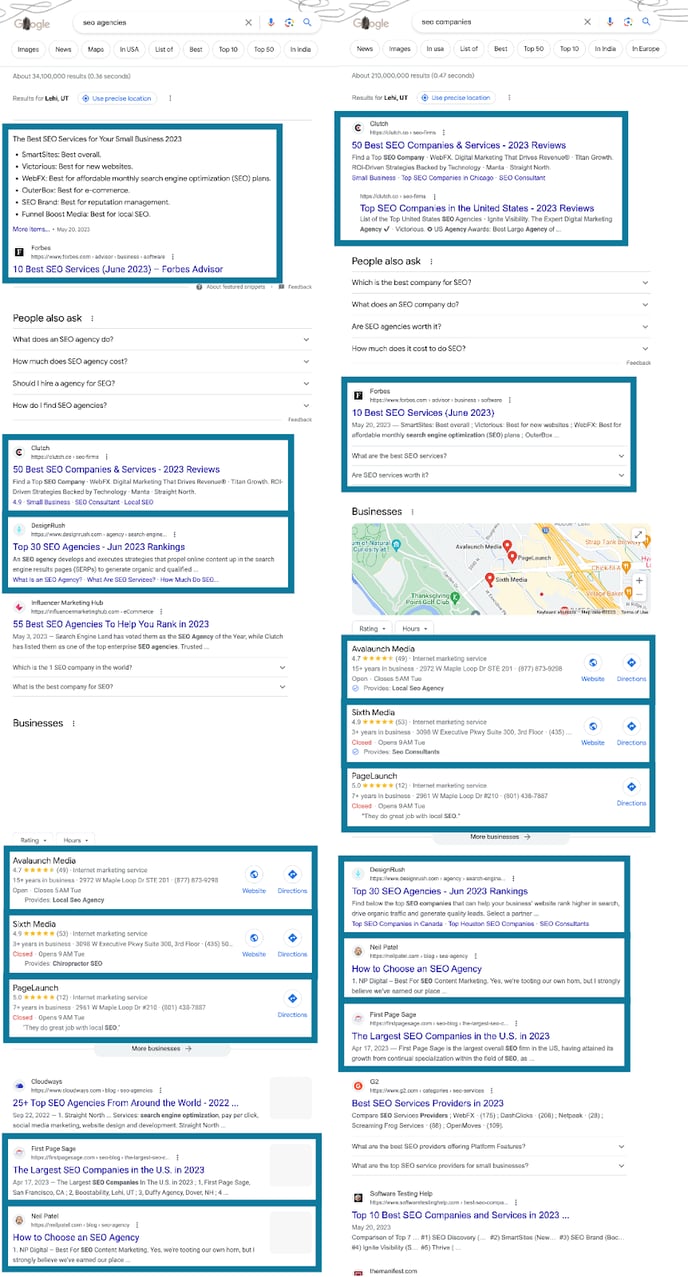This is how our system recognizes and creates keyword clusters.
What are keyword clusters?
If you search for something like “seo company,” the SERP that Google delivers for it will likely contain a variety of results and features.
You could potentially see everything from featured snippets to local map packs to PAAs and even a few traditional organic rankings.
If you searched for “seo agency” instead, you would see a different SERP, but one with a LOT of similarities.
Here’s a side-by-side example with the ads removed. You can see that 8 of the top 10 are the same.

These similarities are the basis for our keyword clustering.
How we do keyword clustering
Manually finding all these overlapping results is nearly impossible to do at scale, but now you can let our system do it for you.
We take all the SERPs you’ve gathered for your project and start finding and identifying where a certain number of these URLs match.
If enough of them have matching results, we can say that Google sees a lot of similarities in those specific keywords – and this is data you can use to tailor your content marketing and SEO campaigns.
These clusters show that Google believes that a single URL or page can rank for all of the keywords in that cluster, so you can target that grouping without creating multiple pages.
What can you learn from these clusters?
If you see three or four URLs in a cluster, that means the search engine sees those keywords as being pretty close.
If you see 6 to 8 URLs crossing over, then you can assume that Google sees those terms as essentially the same and you can build out your website and content strategy accordingly.
Nozzle provides a wide range of other useful metrics along with these clusters, so you can use that to discover your best opportunities and plan your next steps.
Check out the complete keyword clustering overview for all the specifics.
